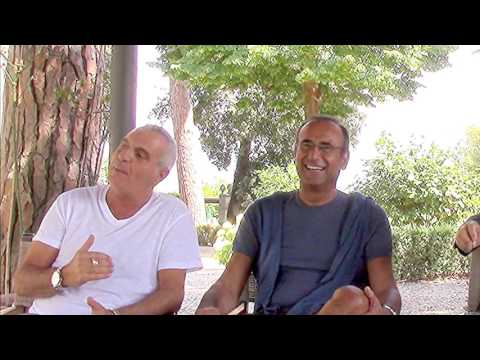The Medicean Villa of Castello

The Medicean Villa of Castello has a very plain two-storey facade: the building clearly displays renaissance shapes in its ground floor windows, in the small stony portal (that led to the ancient secret garden), and in the simple first floor windows with their stony thresholds and cornerstones. Beneath the roof there are some rectangular apertures also made of stone. The only decorative element is the portal surmounted by a balcony, which shows the many restorations made over the centuries, and the windows, some painted, some real, that open at the height of the mezzanine. Another succession of apertures, also outlined in stone, provides light to the basement.
The Villa is built around a 16th Century courtyard, bordered on the shorter sides by two loggias with tuscanic pillars. Only one example remains of the Villa’s original decorative façade: an Annunciazione (i.e. Annunciation) frescoed on the lunette decorating the head of the stairs, where they lead into the courtyard. The fresco (taken down and restored in the Seventies) makes use of some compositional elements that originate from the Ghirlandaio school, widely popular at the time, and is attributable to Raffaellino del Garbo.
Notices by Crusca
-
Speaker's corner
La competenza linguistica dei giovani italiani: cosa c'è al di là dei numeri?, by Rosario Coluccia.
Activities
-
The Piazza aims at the preservation and at carrying out activities for the promotion of multilingualism in the European Union; 2007-ongoing.
-
Digital integrated archive of didactic materials, iconographic and multimedia texts and documentation for the divulgation of Italian linguistic and historical-cultural heritage, with special regard to the second and third generation Italians abroad; project FIRB; 2009-2013.
-
Creation of Il Vocabolario del fiorentino contemporaneo (Dictionary of Contemporary Florentine Language): project financed by Regione Toscana and Comune di Firenze (first three-year period) and by Federico del Vecchio Bank - Banca Etruria group (second three-year period); 1994-1996/2011-2013.













